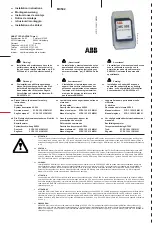
Quantum DXi-Series Command Line Interface (CLI) Guide
6-67081-09 Rev B
February 2014
4
Adding the CLI Directory to the Path
• Curly braces “{ }” in the syntax are used to group options and/or values
together for readability. These characters should not be used when entering
the commands.
• Option values separated by a comma “,” mean that one or more of the
values can be specified.
• The option names and/or values may change in the final release version.
Finally, it should be noted that all options and values are defined as single
tokens in the command line syntax. Thus if a provided value consists of multiple
tokens, it must be quoted to prevent the shell from interpreting it as separate
tokens. For example:
syscli --add share .... --desc 'This is a test share'
In addition, if a provided value contains characters that are special to the shell,
these characters must be escaped correctly so that the shell treats them as
regular characters. For example,
syscli --add share .... --desc Testing\!
Note:
The shell used in the CLI user accounts is the
bash
shell. The set of
special characters are the same characters that
bash
treats as special
characters. Refer to the
bash
shell documentation (
www.gnu.org/software/bash/manual/bashref.html
) for the set of
special characters interpreted by the shell. If you do not want the shell
to interpret any special characters, use single quotes (‘).
Adding the CLI Directory to the Path
The
syscli
commands are located in the
/hurricane
directory. To make it easier to
invoke the CLI commands, you should add this path to the user profile.
To do this, add the following line to the user profile:
PATH=$PATH:/hurricane;
export
$PATH
CLI Help Commands
The following help commands are available:
• Typing
syscli
alone will display a summary of help commands.
• Typing
syscli help
will show syntax for all
syscli
commands.
• Typing
syscli help NAS | VTL | OST | REPLICATION |...
will show syntax for
all Network Attached Storage (NAS), VTL, Open Storage Technology (OST),
replication, etc. commands respectively.















































